Harvey MacKay's Blog, page 7
June 23, 2017
Friendships can lead to good working relationships

Two friends were walking through a dense jungle. Knowing the dangers, they promised to stick together whatever happened.
Suddenly a tiger appeared in the bushes. One friend immediately turned and ran, climbing up a tree and leaving his companion behind. He watched as his friend dropped to the ground and played dead.
The tiger approached, sniffed around, and leaned down, seemingly whispering something in the man’s ear. It roared once, then stalked away.
Feeling ashamed, the other man climbed back down the tree. “What did the tiger say to you?”
The man looked up. “He said, ‘Never trust a false friend.’”
Some days, you just need to know you have got a friend.
The point is you need to feel that someone “gets” you and is in your corner. With all the push, pull and tug that can go on in the workplace (and it happens everywhere, folks, even at the good places), you have to develop your own support systems – and friends can be invaluable. Good ones are like rocks; they keep us anchored during our personal storms.
You probably spend most of your waking hours at work, so friendships are natural. Working together can easily turn co-workers into best friends, making jobs more enjoyable and the workplace a home away from home instead of just a way to make a living.
But friendships need to be managed appropriately just like every other workplace relationship. Follow these simple guidelines so neither your friendships nor your job is at risk.
Limit social chatter. Everyone chats a little at work, but don’t let your friendly conversations overshadow your responsibilities. Stay focused on your job.
Keep private issues private. When you have problems to discuss, do it over lunch or after work.
Avoid gossip. Most of us love to talk about other people, but keep your natural inclination to share rumors about co-workers or managers in check. If colleagues realize you’re gossiping about them, the backlash could be unpleasant.
Don’t do each other’s jobs. Pitching in to help a friend in a crunch is admirable, but keep it to a reasonable limit. Your manager is in charge of assignments and responsibilities, not you. Don’t spend so much time helping a friend do his or her job that you neglect your own.
Include, don’t exclude. You may prefer the company of your friend, but don’t ignore the rest of your co-workers. Invite other co-workers to lunch, and include them in your conversations so they don’t feel left out. You may even make new friends by expanding your circle at work.
Being there for another person can offer you huge rewards psychologically as well. After all, part of the joy of a good friendship is being there for the other person when life gets rough – and it does get rough at times for everyone.
Keep in mind the words of Abraham Lincoln – someone who often needed friends along the difficult path of his presidency: “The better part of one’s life consists of one’s friendships.”
What is a friend? The following description of friendship was discovered on the wall of a doctor’s office. It was attributed to C. Raymond Beran.
Friends are people with whom you care to be yourself. Your soul can be naked with them. They ask you to put on nothing, only to be what you are. They do not want you to be better or worse. When you are with them, you feel like a prisoner feels who has been declared innocent. You do not have to be on your guard. You can say what you think, as long as it is genuinely you.
Friends understand those contradictions in your nature that lead others to misjudge you. With them you breathe freely. You can avow your little vanities and envies and hates and vicious sparks, your meannesses and absurdities, and in opening them up to friends, they are lost, dissolved on the white ocean of their loyalty.
They understand. You do not have to be careful. You can abuse them, neglect them, tolerate them. Best of all, you can keep still with them. It does not matter. They like you. They understand. You can weep with them, sing with them, laugh with them, pray with them.
Through it all – and underneath – they see, know, and love you.
What is a friend? Just one, I repeat, with whom you dare to be yourself.
Mackay’s Moral: The friendships you cultivate will help you grow.
The post Friendships can lead to good working relationships appeared first on Harvey Mackay.
June 15, 2017
More street-smart ideas to try
 You learn to be book smart in school, but you better not forget that you need to also be street smart. As I like to say, knowledge does not become power until it is used!
You learn to be book smart in school, but you better not forget that you need to also be street smart. As I like to say, knowledge does not become power until it is used!
I succeeded because I have street smarts that I either developed or picked up throughout my career from some of the world’s smartest and most interesting people.
I have done four previous columns on street-smart ideas that have generated terrific reader feedback. Here are some more of my favorites.
First idea: Know thy competitor. Walmart founder Sam Walton, richest man in America at the time, is walking through a K-Mart store with his CEO, David Glass. David told me this story personally. Sam suddenly stops in an aisle and says, “How come we’re not doing that?”
Sam Walton spent more time in K-Mart stores than his own Walmart stores.
Interesting fact: Both K-Mart and Walmart started in business the same year – 1962. Walmart’s sales last year were nearly $486 billion, while K-Mart sales were a paltry $10 billion.
Next idea: Channel your inner child. We start out as pretty creative beings – children let their imaginations take them to places they’ve never seen and do things that seem impossible. We encourage it as fun and playtime, but we should celebrate it as the potential for great discovery and accomplishment.
As Pablo Picasso, arguably one of the most creative artists who ever lived, said, “Every child is an artist; the problem is staying an artist when you grow up.”
Or maybe you can be inspired by another notable thinker, Dr. Seuss (aka Theodore Geisel): “Think left and think right and think low and think high. Oh, the thinks you can think up if only you try.”
Next idea: The most important term in any contract isn’t in the contract. It’s dealing with people who are honest. The second most important term is including the right to inspect all their books and records, including tax records, correspondence and so on pertaining to the agreement. Once that clause is in there, people with a tendency to get cute usually don’t.
Next idea: Everything is negotiable. Everything has a price. A deal can always be made when the parties see it to their own benefit. Nine out of 10 lawsuits are settled on the courthouse steps before proceeding to trial. Even the most bitter of adversaries will sit down at the same table when they can be shown there is a greater advantage to themselves in negotiating than in fighting. The worst settlement is usually better than the best lawsuit.
Next idea: The given reason is seldom the real reason. You must find out the real reason to be successful. In sales, you are asking for the order your entire career. When a person says no, they seldom tell you the real reason.
For example, way over half the time the prospective buyer will tell you that your price is too high … there isn’t enough difference in price to switch … they are concerned about your delivery schedule … you weren’t aware of the long-standing relationship with our current supplier … a myriad of reasons.
It’s your job to discover the real reason. Then and only then can you can work to overcome their objections.
Next idea: Paint your wagon. Did you ever notice how many people happen to work in office buildings more than one-story in height? And how many of these same people look out the window off and on during the day? Why not paint your company name and logo on the top of your delivery vehicles or trucks? It’s the easiest, least expensive and most neglected form of advertising.
Next idea: Call on people on their birthdays. I always make it a point to visit my customers on their birthdays. If you can’t get to them personally, call or email them. Send them a humorous, but tasteful birthday card. Stress this tip with your salesforce.
You won’t believe how much business we write up on our customers’ birthdays. They are in a good mood. Bring them a creative gift. You are not buying their business, you are building a relationship.
I once figured out that I make approximately 300 phone calls a year to my customers and friends on their birthdays. I always try to put a smile on their face by singing Happy Birthday in a humorous voice.
Mackay’s Moral: Using your street smarts will put you on the road to success.
The post More street-smart ideas to try appeared first on Harvey Mackay.
June 8, 2017
Your business is known by the customers you keep
 Few issues baffle me more than the lack of service that businesses think their customers will tolerate. I just don’t understand how some companies keep their doors open. On the other hand, I’m sure that some of those businesses can’t figure out why they lose customers.
Few issues baffle me more than the lack of service that businesses think their customers will tolerate. I just don’t understand how some companies keep their doors open. On the other hand, I’m sure that some of those businesses can’t figure out why they lose customers.
I receive lots of mail from folks who have had unpleasant or even nasty experiences trying to get problems solved. I hear horror stories from readers who waited patiently for help only to be told they should come back another time when it wasn’t so busy . . . phone calls getting dropped while being routed to another person . . . and on and on.
I just don’t get it. If you don’t love your customers, why are you in business in the first place?
Let me share a couple war stories. To be kind, I won’t identify the specific businesses.
One reader shared this story: “We ate at a certain restaurant a lot, mostly for dinners. Then one day we went there for lunch. My wife has severe arthritic hands and is unable to pick up a glass, so we always ask for a wine glass everywhere we eat and have no trouble. But this day they refused to give us one and offered us a plastic cup. Her trouble is she cannot grasp, and the wine glass works great by just slipping her fingers around the stem. We had to leave and will not return again. They were not even very polite about it.”
Seriously? They have wine glasses hanging at the bar, but refused to put water in one? Wow, what a ridiculous way to treat a customer. And I suspect it will be more than that customer, because they will likely share their experience with their friends.
Here’s another doozy: “I went to a car dealer for maintenance on my 2014 SUV. I had an appointment and sat in the service bay for 10 minutes. Then an employee told me to wait in the waiting room for my appointment tech. I waited 20 minutes longer, but no tech. I found him sitting at a computer and asked for my keys. He said nothing but ‘have a nice day’ which means nobody cared! Went to another dealer, got an immediate hello and great service! P.S. I spent $155 and am looking to trade for smaller car. I left a message to call me back at the first dealer, but no one called back … nobody cares.”
Handled properly, that first dealership could have had a customer for life. He wanted to buy another car, and probably another and another down the road. Instead, they “drove away” a customer and anyone who hears about his experience.
The Celina Group describes unhappy customers in this warning: “I’m a nice person. When I get lousy service, I never complain. I wouldn’t dream of making a scene. I’m one of those nice customers. And I’ll tell you what else I am. I’m the customer who doesn’t come back. I would tell you off and feel better, but in the long run, it’s better just to leave quietly. You see, a nice customer like me, multiplied by others like me, can bring a business to its knees. There are plenty of us. When we get pushed far enough, we go to one of your competitors.”
Let’s look at the flip side. Here’s a classic example of valuing your customers.
Few names in retailing are more famous than that of Stanley Marcus, the man who built Neiman Marcus into one of the world’s most famous department stores. He told me how his father, who founded the business, gave him an unforgettable lesson in valuing a customer properly.
A woman customer had ruined a dress she had obviously worn and was loudly demanding her money back. When Stanley seemed resistant, his father admonished him and told him to give the woman her money back, no questions asked.
Later, Stanley argued with his father that the woman had obviously worn and abused the dress and that the manufacturer would not help pay for it. His father replied that the woman wasn’t doing business with the manufacturer. She was doing business with Neiman Marcus, and that he didn’t want to lose a customer over a $175 dress.
Many years later, someone calculated that the woman had spent more than $500,000 at Neiman Marcus. Great customer service pays off!
Mackay’s Moral: Optimal customer service is not optional.
The post Your business is known by the customers you keep appeared first on Harvey Mackay.
June 1, 2017
The worst failure is the failure to try
Failure can become a weight or it can give you wings.
That is the message I hear every spring when I attend the Horatio Alger Awards Ceremony in Washington, D.C., where 10 new members are inducted annually. I was honored to be one of them in 2004. During the short speeches given by new members to the audience, which includes more than 100 scholarship students, the message I hear over and over again is – Don’t be afraid to fail.
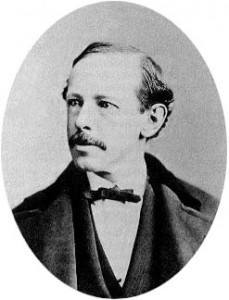 The Horatio Alger Association of Distinguished Americans is a nonprofit organization based in Alexandria, Va., that was founded in 1947 to honor the achievements of outstanding Americans who have succeeded in spite of adversity and to emphasize the importance of higher education. The association is named for Horatio Alger Jr., a 19th-century author of hundreds of stories in the “rags-to-riches” genre, extolling the importance of perseverance and hard work.
The Horatio Alger Association of Distinguished Americans is a nonprofit organization based in Alexandria, Va., that was founded in 1947 to honor the achievements of outstanding Americans who have succeeded in spite of adversity and to emphasize the importance of higher education. The association is named for Horatio Alger Jr., a 19th-century author of hundreds of stories in the “rags-to-riches” genre, extolling the importance of perseverance and hard work.
The association gives the annual Horatio Alger Award to people who exemplify its ideals. It also grants scholarships, and is one of the largest providers of need-based scholarships in the United States. All scholarships are funded by the generosity of Horatio Alger members and friends.
Among the more than 2,000 new scholarships it awards each year, the association presents its top scholarship, the National Scholarship valued at $25,000 to more than 100 students from every U.S. state and Puerto Rico. National Scholarship recipients are also given an all-expenses-paid trip to Washington, D.C. where they meet association members, attend the Horatio Alger Awards Ceremony, and learn about the federal government and the American free-enterprise system. Since the inception of its scholarship programs in 1984, the association has awarded more than $125 million in college scholarships to more than 25,000 young people.
Perhaps the most important lesson these young scholars learn is that failure is not fatal. They hear about pathways to success that include episodes of difficult times, the temptation to give up, and the persistence to carry on. The members reinforce that failure is merely an opportunity to start over again, wiser than before.
Inspired by these real-life success stories, combined with scholarship help and an amazing ready-made network of resources, these young people have opportunities to earn college degrees and jump start their professional aspirations.
And they will have a clear understanding that failure is not the end of the road. It is potentially a new entrance ramp to the highway of life.
No one sets out to fail intentionally. Still, failure happens – sometimes because of bad luck or uncontrollable circumstances, but other times from entirely preventable causes. Whatever your career goals or personal objectives are, your chances of avoiding failure will improve if you address these all-too-common errors:
Wasting time. Planning is essential, but too much planning can consume the energy you need in order to execute your plan effectively. Set clear deadlines. Be realistic, but ambitious. Don’t obsess over getting every last piece of data before taking action.
Excluding people. You don’t have to like all your co-workers in order to work with them. Don’t limit your partnerships and alliances to people who agree with you 100 percent. Be willing to bring in experts with different points of view, and listen to their opinions. You need honest feedback, not blind encouragement.
Fighting the wrong battles. You’ve got to know when sticking to your position is going to be worth the time and energy, and when to back down in order to conserve your resources for the next confrontation. You don’t have to succeed all the time to win in the end.
Ignoring the short term. Yes, you have to think about an endpoint that’s far in the future, but don’t focus on it so intently that you forget to generate results in the meantime. You won’t have the chance to succeed in the long run if you fail in the short term, so look for some significant initial wins you can point to as evidence that you’re on the right track.
Playing it too safe. In order to succeed, you’ve got to be willing to fail. The people around you will catch on to your dislike of risk if you never take on a difficult project or an ambitious challenge. Don’t be reckless, but don’t shy away from hard work if you want your boss, or your teammates, to believe in you. No risk, no reward.
The heroes in Horatio Alger’s stories demonstrate that you can’t avoid setbacks and disappointments. As Robert F. Kennedy said, “Only those who dare to fail greatly can ever achieve greatly.”
Mackay’s Moral: Make your stumbling blocks your stepping stones.
The post The worst failure is the failure to try appeared first on Harvey Mackay.
May 25, 2017
Optimists see opportunities in challenges
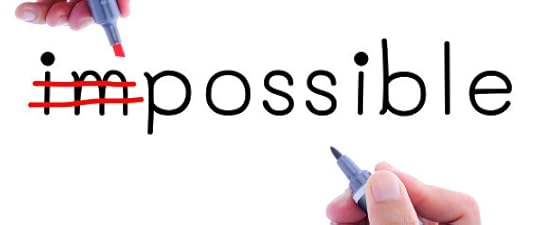
Two hikers were camped out overnight in the mountains. A thunderous voice roused them from their sleep. The voice said, “This will be the saddest day or the happiest day of your lives,” then instructed them to pack up their belongings, make their way to the river, gather stones in their backpacks that they couldn’t look at until morning, and continue on their journey never to return to the river or the mountain again.
The hikers did as they were instructed and stumbled through the darkness to the river. They stuffed their packs with cold, wet stones and carefully trekked down the rocky trails that would lead them away from the mountain.
Shortly after sunrise they reached a valley and decided to set up camp to rest for a while. But first, they pulled out their packs to examine the stones they’d collected from the river. To their surprise, what they’d thought were river rocks were actually diamonds and rare gems. Both hikers sat in silence, overwhelmed by the bounty before them.
The first hiker said, “Now I know why this is the saddest day of our lives. We should’ve gathered more stones.”
“You must be kidding!” the second hiker said. “This is the happiest day of my life. Look at the wealth we attained by simply taking advantage of an opportunity that was offered to us.”
Therein lies the perfect example of what Winston Churchill meant when he said: “A pessimist sees the difficulty in every opportunity; an optimist sees the opportunity in every difficulty.”
Positive thinking alone may not ensure success, but it’s an important start. If you don’t believe in yourself, you’ll have a hard time persevering against the obstacles and setbacks you’re likely to encounter.
How you look at life can drastically affect how much you enjoy your life. Optimists expect the best out of life. Good news: It’s an attitude that can be learned.
Optimism is based on these tenets:
Bad things happen in life, but they are temporary.
Bad things in life are limited in scope.
People have control over their environments.
Pessimism is based on these tenets:
Good things in life are temporary.
Good things in life are limited in scope.
People have no control over their environments.
According to conventional wisdom, optimists and pessimists are both right about the same number of times, but optimists get to enjoy their lives more. Optimists help create some of the good they come to expect, so they are probably right more than not. And they don’t waste time worrying about what they’re not right about.
If you want to maintain the right attitude in the face of adversity, start by telling yourself you can change. Think of how you’ve changed throughout your life emotionally. You’re probably a different person today than you were five years ago, so don’t assume you can’t evolve further.
Use positive language. Replace words and phrases like “impossible” and “I can’t” with words that emphasize strength and success: “challenging” and “I must.”
Create the right environment. Listen to music that uplifts you. Watch inspirational movies and shows. Read motivational books. Don’t spend too much time on downbeat material. Mix it up, with a leaning toward the positive.
Appreciate your life. Take some time to enjoy what you’ve already achieved with your life. Think about what you did to get where you are, and use that as a reminder of your capabilities.
Let go of mistakes. You’re bound to fail at some things. Learn what you can and move on instead of beating yourself up over and over.
In the autumn of 1994, animated film studio Pixar was in trouble. According to “Likeonomics” by Rohit Bhargava, Pixar was deep in the red, due in part because its upcoming movie “Toy Story” was way over budget. Microsoft had expressed interest in buying the company to gain access to some of its 3D graphic design software. The deal fell through, and Pixar’s prospects were shaky in advance of the movie’s release.
That didn’t deter the team, though. As they were putting the finishing touches on “Toy Story,” the filmmakers met for lunch to discuss possible new projects.
The three ideas they came up with? “A Bug’s Life,” “Monsters Inc.,” and “WALL-E,” all of which became blockbuster hits. Despite their financial uncertainty, the “creative types” retained their optimism about the future.
Do you suppose they ordered their food “sunny-side up”?
Mackay’s Moral: It’s just as easy to look for the good things in life as the bad.
The post Optimists see opportunities in challenges appeared first on Harvey Mackay.
May 18, 2017
Be careful when offering criticism
When you offer criticism, be aware of whom you are criticizing and how they might receive it.
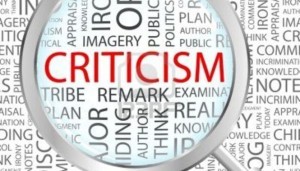
Case in point: A number of years ago, my son David was entering his senior year at Stanford University. He thought it might be fun to spend his last college summer freewheeling in San Francisco, working five or six shifts a week as a waiter. He figured he would earn enough money to really enjoy his leisure hours. He was pretty driven and interviewed at a swanky brand new restaurant called Stars, being opened by renowned chef Jeremiah Tower. It was scheduled to open three weeks later. Stars was a posh restaurant with a great location, catering to San Francisco’s elite.
David figured that what he lacked in experience, he could make up in enthusiasm and education. He got the job and started training a few days later surrounded by experienced, sophisticated servers twice his age with resumes at some of the best restaurants in the country. After three weeks of intensive training, the restaurant opened.
Things were going great and David was rewarded with generous tips. One night alone, he made more than a month’s rent. That same night the headwaiter pointed out a classic service error to my son: failing to clear unused glassware. If someone wasn’t drinking wine or water, their glasses should be removed from the table. David told me this was like finding a needle in a haystack, considering that each place setting had three glasses even before anyone sat down – add cocktails to that and a table of six would start out with 24 crystal glasses.
After the restaurant was open to the public for a week or so, my wife and I came to town and decided to check out the new restaurant and let David experience it from the other side, as a customer. He would have a chance to sample some of the food, assess the service and, in turn, become a better server himself.
My wife, Carol Ann, who has her master’s in cooking and a doctorate in ordering, got the ball rolling with five questions regarding the menu selections. It seemed like we ordered almost everything on the menu. Carol Ann pointed out to us that the dressing on the salad was particularly oily, much less vinegar than normal vinaigrette. Then when the entrees came, the food was not very hot. It was tepid at best. Everything was edible, but not spectacular. My veal stew was particularly bland.
The next day at work, David went right up to Jeremiah Tower and described the little experiment he’d done. First off, David asked him about the “oily salad dressing.” The chef explained that he thought that a heavy vinegar dressing was too hard on the palate, too early in the meal, so he created a dressing that was “soft on the palate.”
“Great, great!” David said, “This will be very helpful to know as a front waiter.”
As he turned to leave, David continued, “One more thing … The food wasn’t very hot. Are you concerned that people might burn their tongues?”
“What?” exclaimed Tower. “The food should be piping hot, and it’s your job as a server to get it out there quickly!”
“Yes, sir, you got it. I will,” David said. So now he’s thinking he is two for two in valuable, practical observations.
The head chef again turned to leave, but David stopped him in his tracks. “Oh, one more thing. I wanted to talk to you about the veal stew … I found it somewhat bland.” At this point, Tower looked David in the eye, then spun on his heels and marched into the kitchen.
David’s shift that night went well – 20 percent in tips from seemingly very satisfied customers. At the end of the night, as he was tallying up his earnings, the headwaiter came up to him and mentioned that twice that evening he had failed to clear glassware. He was fired, effective immediately.
David was crushed. He had poured his heart into this job. As he was walking to the cable car he heard a voice shout out his name. He turned around to see the headwaiter, jogging up to him. He looked upset and he quietly said, “David, it wasn’t the glassware. Next time, just be careful what you say to the head chef.”
Mackay’s Moral: Never tell a mother her baby is ugly.
The post Be careful when offering criticism appeared first on Harvey Mackay.
May 11, 2017
Mentoring works both ways
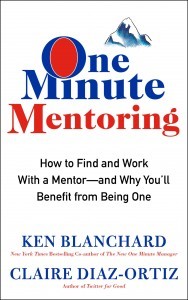 Anyone who doesn’t understand the value of one minute hasn’t been paying attention to my good friend Ken Blanchard. Starting with his “One Minute Manager” and moving through a series of bestsellers, he has shown his millions of fans how just sixty seconds can improve your chances for success.
Anyone who doesn’t understand the value of one minute hasn’t been paying attention to my good friend Ken Blanchard. Starting with his “One Minute Manager” and moving through a series of bestsellers, he has shown his millions of fans how just sixty seconds can improve your chances for success.
Good news – he’s at it again, this time with “One Minute Mentoring,” a must-read for folks looking for some help and those who are prepared to offer it. He’s teamed up with Claire Diaz-Ortiz, a former Twitter executive and author of “Twitter for Good.” Their combined knowledge of intergenerational mentoring is presented in this fictional parable about the power of finding or being a mentor.
But shouldn’t mentoring be a longer process than just one minute? Ken and Claire would agree with that, but say that “the best advice we ever gave or received was given in less than a minute. In other words, the guidance that really made a difference did not come in the form of long, complex theories – it came in short, meaningful insights.”
As one who has been on both sides of the conversation, I couldn’t agree more. I am fortunate to have learned from a variety of mentors: my father Jack Mackay, my father-in-law Rudy Miller, my University of Minnesota golf coach Les Bolstad, my college adviser Harold Deutsch, businessman Curt Carlson, and many others. I owe much of my success to their guidance.
Understanding that I had a responsibility to give back, I have also mentored over one hundred young – and not so young – entrepreneurs. I usually learned as much from the experience as my mentees did. And it was worth every minute.
How did we find each other? Sometimes through mutual friends, work events, even sitting next to one another on a plane. As the authors say, “When the student is ready, a teacher appears. Mentors are all around you once you start looking for them.”
And it works both ways, they say. They encourage people to become mentors because “you won’t fully discover, appreciate or leverage what you have until you start giving it away.”
Compatibility is important, and they describe two aspects of working with someone – essence and form. “Essence is all about sharing heart-to-heart and finding common values. “Form is about structure – how you might work together.”
Ken and Claire say that one of the biggest barriers people worry about is time: “It’s true that a mentoring relationship will take a little time, but a few hours a month is not going to do people in, especially when they realize how energizing and inspiring those few hours will be.”
They also acknowledge a couple other things that get in the way of mentoring – fear and uncertainty. A lot of people are afraid to approach potential mentors, they say, and potential mentors may be afraid that they don’t really know how to mentor.
Added to that, uncertainty about what mentoring really is and how the relationship works scares people away. I’ve found that there isn’t a specific set of guidelines. Every mentor/mentee relationship needs to be tailored to the situation.
Ken and Claire created the MENTOR model to help people build successful relationships:
“By creating a Mission, you’ll put the relationship on solid footing.
“By deciding how to Engage, you’ll have clarity about how to work together.
“By Networking, you’ll expand your horizons.
“By building Trust, you’ll deepen the bond.
“By creating Opportunities, each of you will grow.
“And by Reviewing and renewing your partnership, you’ll know if and when your season of mentorship has ended.”
Exactly what is a “season of mentorship?” From my own experience, I can tell you that I have mentored some people for a few weeks and others for years. As their needs have changed, I have sometimes directed people to other mentors who might have different insights. I know my limitations!
Similarly, I have relied on my mentors, sometimes with months or years between those contacts. But I made a point of staying in touch so that they would realize how much I valued their help. I made sure they knew about my successes and appreciated their contributions toward my goals.
“Mentoring will take some time and intention,” Ken and Claire say. “It also takes time and intention to learn to drive – but once you know how, you can really go places!”
Mackay’s Moral: One minute truly can change your life.
The post Mentoring works both ways appeared first on Harvey Mackay.
May 3, 2017
Values determine who we are
In the famous French story, “The Little Prince,” a fox becomes the best friend of the young royal on a fictitious planet. When the fox must depart from the prince forever, he offers to tell him the world’s most wonderful secret if the prince meets certain conditions. The little prince agrees, does what is expected and then asks to be told the greatest secret.
“Only that which is invisible is essential,” the fox replies.
The most valuable things in life cannot be seen with the naked eye: love, friendship, hope, integrity, trust, compassion and values.
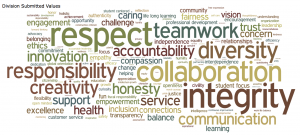
You can’t see values, touch them, taste them or smell them. Yet they are critical, intangible essentials that bring continuity and meaning to life.
And they are every bit as important for organizations as they are for individuals.
“It’s not hard to make decisions, once you know what your values are,” said Roy E. Disney. Roy Disney was the partner and co-founder, along with his younger brother Walt Disney, of Walt Disney Productions, since renamed The Walt Disney Company.
The Walt Disney Company is the epitome of a values-driven organization. While it may be overshadowed by its retail prowess, its primary product is happiness. Their “Disney courtesy” concept is based on four key values: safety, courtesy, show and efficiency. Every one of their performance standards is based on these encompassing beliefs.
Customer service is a lifestyle for all Disney employees. Employees are expected to think, walk, talk and breathe safety, courtesy, show and efficiency. This lifestyle creates happiness for their guests.
Defining your values is not just an academic exercise. “Clarifying your values is the essential first step toward a richer, fuller, more productive life,” said Carl Rogers, an American psychologist and a founder of the humanistic approach (or client-centered approach) to psychology. Rogers is widely considered to be one of the founding fathers of psychotherapy research and was widely honored for his pioneering research.
If you want to clarify your own values, ask yourself these questions:
What do I believe in?
In what guiding principles can I become constructively obsessed?
What governs my life?
What do I stand for?
What puts meaning in my life?
What qualities are important for my life to be complete?
Hey – I never said this was easy! This is not a quick and dirty exercise. Values are not a spur of the moment action. They are non-negotiable principles that guide our everyday lives. Your personal convictions, not those of others, determine how you live. You cannot separate personal value from personally held values.
Nor can you separate corporate value from corporate values. Customers and competitors should be able to see your values in action every day. Honesty, fairness, respect and trustworthiness are among values that should be front and center with every transaction.
The often-quoted Chinese philosopher Confucius, who lived in the fifth century B.C., wrote: “The rule of life is to be found within yourself. Ask yourself constantly, ‘What is the right thing to do?’ Beware of doing that which you are likely, sooner or later, to repent of having done.”
When you are in a position of having to repent, do it quickly and sincerely. That is another value that is essential to a good life: being able to admit mistakes and correcting them.
I will never forget when my good friend Lou Holtz was coaching Notre Dame in the 1989 Fiesta Bowl against West Virginia. His players learned a valuable lesson about their coach’s values that day, which resulted in a national championship.
Notre Dame was penalized on two consecutive plays for “taunting” the opposition. Despite knowing that his actions would bring another penalty, Holtz ran out on the field and asked the referee which of his players were doing the taunting, since this was before referees identified players by numbers. Then Holtz – with a national TV audience watching – grabbed the player and told him what was expected of him.
Holtz has always believed strongly in his players, but he demands that they follow his three simple values:
Do what is right. Be on time, polite, honest, remain free from drugs, and if you have any questions, get out your Bible.
Do everything to the best of your ability in the time allotted. Mediocrity is unacceptable when you are capable of doing better.
Show people you care.
Mackay’s Moral: Decide what you will stand for or you won’t have a leg to stand on.
The post Values determine who we are appeared first on Harvey Mackay.
April 27, 2017
Compliments do wonders for our sense of hearing
Mark Twain once said, “I could live for two months on one good compliment.”
We all love to receive compliments. They make everyone feel better. Turns out studies show that compliments can also help people perform better.
In a study published in PLoS One, researchers at the National Institute for Physiological Sciences at the University of Tokyo, recruited 48 adults to perform a task that required them to tap items on a keyboard in a specific pattern. Then the adults were split into three groups. One group received personalized, individual compliments from one of the administrators of the study. Another group was forced to watch as other people received compliments. The third group was simply meant to evaluate how they did, as participants, on the test.
When the participants returned to the testing facility the next day, all of the participants were asked to perform the finger test once again. The group that received personalized compliments performed better on the test that day than either of the other groups. Researchers believe that the compliments made them perform better.
According to their study, compliments activate the same region of the brain – the striatum – as cash does, and both encourage people to perform better. In other words, compliments may not buy your groceries, but they sure help.
Norihiro Sadata, one of the study authors, said, “To the brain, receiving a compliment is as much a social reward as being rewarded money. We’ve been able to find scientific proof that a person performs better when they receive a social reward after completing an exercise. There seems to be scientific validity behind the message ‘praise to encourage improvement.’”
Compliments are a powerful social and work-related tool. If you want to make a positive impression at work, be generous with compliments. Show appreciation to co-workers (and even your boss) for their good work. When giving compliments, the more specific the better. This shows you notice the little things.

Compliments not only reassure people, they create positive energy, strengthen relationships and build trust. They are a sign of respect.
You don’t need to be an expert at giving compliments. You just need to be sincere and genuine. Many people know how to flatter, few know how to praise. Sincere praise reassures individuals. It helps them neutralize doubts they have about themselves. Just remember, the sweetest of all sounds is praise. Silent gratitude isn’t very much use to anyone.
At MackayMitchell Envelope Company, we are intensely grateful for customer referrals, which we consider to be the ultimate compliment. When customers are happy with our service and products, there is no better validation than for them to tell their friends.
Everyone likes a pat on the back and a hearty “well done.” But making praise a truly effective motivational tool requires a little planning. Like anything else, praise loses its effectiveness if it’s overused. On the other hand, power is diminished if it’s underused.
The purpose of workplace praise is to improve productivity and reinforce positive behavior. Try to offer some sort of praise or positive feedback at least once a month. Give extra attention to new employees, those who seem to lack confidence, or team members testing the waters with new assignments. Otherwise, focus on those making an extra effort, accomplishing a difficult task, or exhibiting behavior you want others to emulate.
Don’t ignore the flip side of giving compliments. The givers benefit through improved moods, enhanced positivity and awareness.
Nearly 100 years ago, Charles M. Schwab was one of the first men to earn a million dollars a year working for someone else. Schwab was paid such a handsome amount largely because of his ability to deal with people.
Schwab described his secret: “I consider my ability to arouse enthusiasm among the men the greatest asset I possess, and the way to develop the best that is in a man is by appreciation and encouragement. There is nothing else that so kills the ambitions of man as criticism from his superiors. I never criticize anyone. I believe in giving a man incentive to work. So I am anxious to praise but loath to find fault. If I like anything, I am hearty in my approbation and lavish in my praise.”
A hundred years later, his advice still works for men and women alike.
Mackay’s Moral: As I’ve said a million times, little things don’t mean a lot … they mean everything.
The post Compliments do wonders for our sense of hearing appeared first on Harvey Mackay.
April 20, 2017
Humor works at work
 Life is funny, the saying goes. And when it isn’t funny, sometimes a sense of humor is what gets us through the tough times.
Life is funny, the saying goes. And when it isn’t funny, sometimes a sense of humor is what gets us through the tough times.
Humor plays a special role at work. As critical as it is to take your work seriously, it is equally important to NOT take yourself too seriously.
Many years ago, a Fortune Magazine article talked about how executives should be funnier. I remember it well, because one of my biggest pet peeves is people who cannot laugh at themselves. The wonderful example the magazine used involved auto executive Eugene Cafiero.
When he was president of Chrysler, Cafiero went to England to meet with troubled employees at the company’s plant there. Conflict between management and union employees was tense. As Cafiero entered the plant he was confronted by a man who loudly said, “I’m Eddie McClusky, and I’m a communist.”
The composed Chrysler executive extended his hand and replied, “How do you do. I’m Eugene Cafiero, and I’m a Presbyterian.” The subsequent laughter squelched this potentially explosive confrontation.
“A sense of humor is the one thing no one will admit not having,” said Mark Twain. A good sense of humor helps to overlook the unbecoming, understand the unconventional, tolerate the unpleasant, overcome the unexpected and outlast the unbearable.
I like to say if you can’t take a joke, then you’ll have to take the medicine. That can be a bitter pill to swallow.
Think about your co-workers who you most enjoy working with: They typically have a good perspective on the importance of specific projects, get work finished on time, offer to help out when it’s crunch time, and keep a smile on their faces through it all. And they often manage to put a smile on your face too.
Humor can make unpleasant tasks more palatable. It can diffuse difficult situations and improve already good relations.
I have a friend in a business that you would usually not associate with humor – he’s a funeral director. He doesn’t joke around about the seriousness of his work, but he does encourage his clients to allow themselves to laugh and share humorous memories about their loved ones. He says it helps break the tension and brings comfort to a trying situation.
There is plenty of evidence to support the benefits of humor at work. In a new study, researchers from Harvard’s Business School found that cracking jokes at work show your employer an increased perception of confidence and competence.
The study shows the most effective joke tellers are more likely to be chosen as a group leader. Just make sure the jokes in the office are appropriate. Researchers found inappropriate jokes lead to a perception of low competence. In other words, save the locker room banter and personal insults. Those are never funny anyway.
The most difficult part of using humor at work is knowing where to draw the line. You can joke with a customer, but never about a customer. You can tease your co-workers, or even your boss, but when it gets personal or hurtful, you are in dangerous territory. Refer to the Golden Rule if you are wondering if your remarks are appropriate: Do unto others as you would have them do unto you. If you have to ask someone, you already have your answer. No joke is funny if you are the only one laughing.
Here’s a great take on how one company used humor – as an April Fool’s joke – to deal with requests for taking a day off:
There are 365 days per year available for work.
There are 52 weeks per year in which you already have two days off per week, leaving 261 days available for work.
Since you spend 16 hours each day away from work, you have used up 170 days, leaving only 91 days available.
You spend 30 minutes each day on coffee breaks; that accounts for 23 days each year, leaving only 68 days available.
With a one-hour lunch period each day, you have used up another 46 days, leaving only 22 days available for work.
You normally spend two days per year on sick leave. This leaves you only 20 days available for work.
We offer five holidays per year, so your available working time is down to 15 days.
We generously give you 14 days of vacation per year which leaves one day available for work and no way are you going to take it.
Mackay’s Moral: Humor is more than funny business.
The post Humor works at work appeared first on Harvey Mackay.
Harvey MacKay's Blog
- Harvey MacKay's profile
- 113 followers



